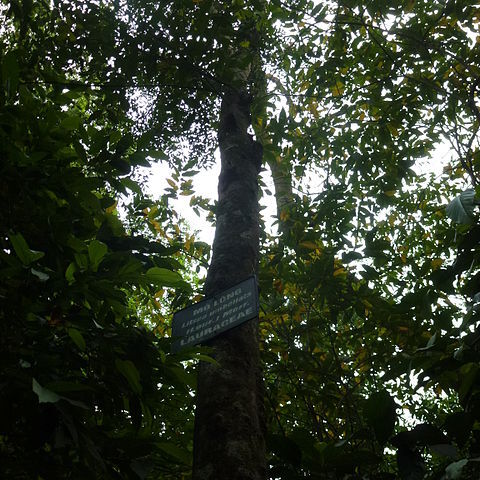Evergreen shrubs or small trees, 3-9 m tall, ca. 20 cm d.b.h. Branchlets ferruginous tomentose. Leaves alternate; petiole 6-8 mm, ferruginous tomentose; leaf blade elliptic or oblong-ovate, 6-12 × 3-4.2 cm, ferruginous tomentose abaxially, glabrous adaxially, pinninerved, lateral veins 8-15 pairs, vertically spreading, base obtuse, apex acuminate. Umbels often in cluster of 3-6 at short branchlets, 4-flowered; short branchlets 2-3 mm, stout, ferruginous tomentose; peduncle 2-3 mm, ferruginous tomentose. Male flowers: pedicel 1-1.5 mm, ferruginous villous; perianth segments 6, lanceolate or ovate, unequal in size; fertile stamens 9; filaments villous, of 3rd whorls each with 2 sessile reniform glands at base; rudimentary pistil lacking. Fruit globose, ca. 6 mm in diam., apiculate at apex, seated on shallowly discoid perianth tube; perianth segments often persistent; fruiting pedicel ca. 3 mm, thickened at apex, ferruginous tomentose. Fl. Apr-May, fr. Aug-Sep.
More
A shrub. It keeps its leaves throughout the year. It grows up to 6 m high. The leaves are alternate. They are oval and rough. They have a prominent midrib. They are 8-12 cm long by 2.3-4 cm wide. The leaf stalk is 5-10 mm long. The flower head comes from the axils of leaves. It has a short stalk. The flowers are separately male and female on the same plant. There are 1-5 flowers together. They are very small and yellow. The fruit is round and 5-6 mm across.


